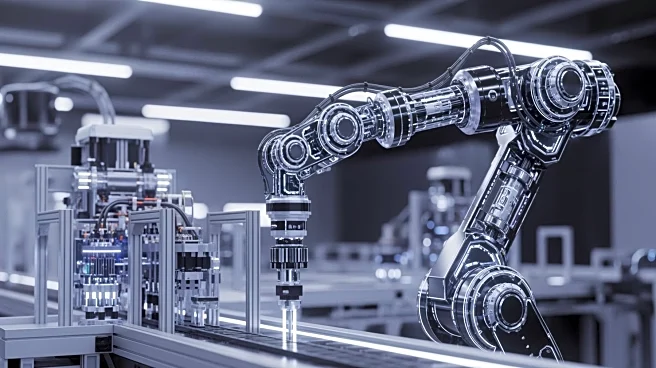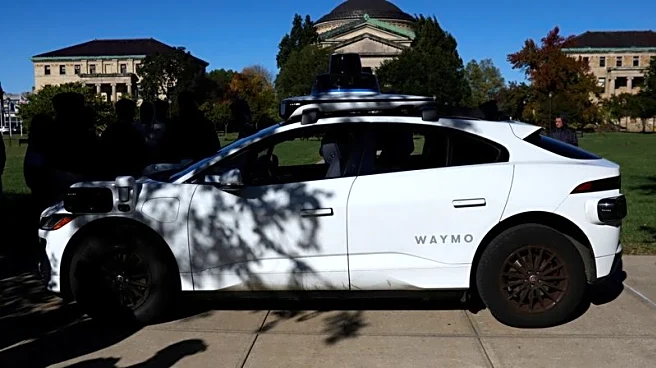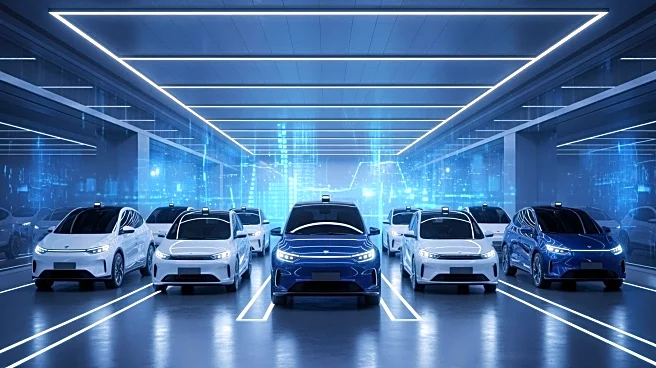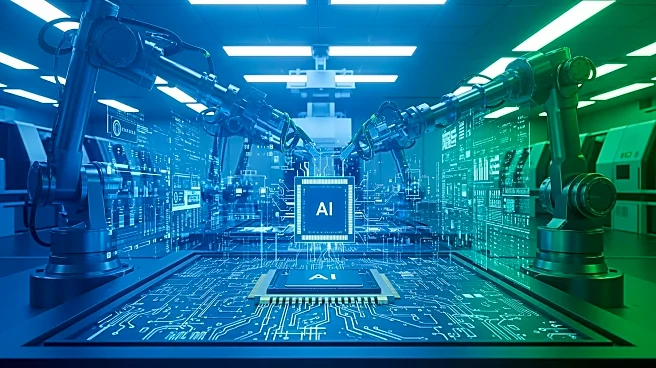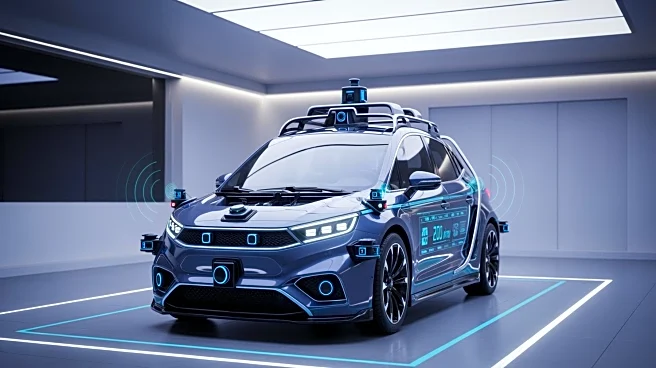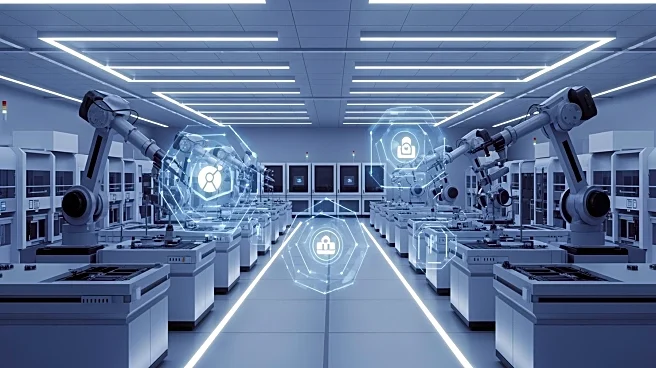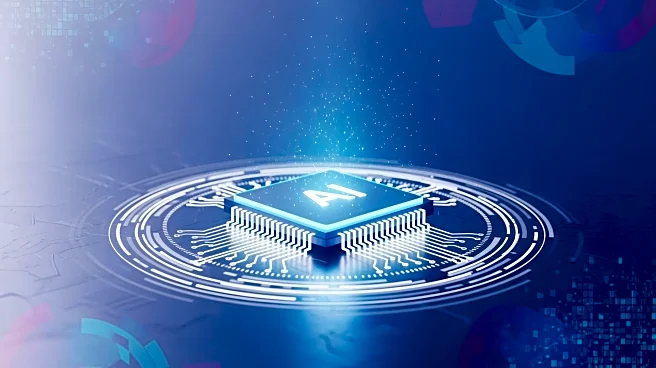What's Happening?
The global economy is transitioning from software intelligence to embodied AI, where algorithms interact with the physical world. This shift involves the integration of perception, actuation, and connectivity
technologies into a single system, enabling machines to improve through physical interaction. Industries such as autonomous vehicles, industrial robotics, and humanoid robots are at the forefront of this transformation. Companies like Waymo, Tesla, and Baidu are competing to develop systems that learn from real-world deployment, while Chinese manufacturers leverage vertical integration for faster iteration. The race to optimize edge AI chips for embodied systems is also intensifying, with major players like Qualcomm and Huawei vying for dominance.
Why It's Important?
Embodied AI represents a significant evolution in technology, with the potential to reshape industries by enhancing production capabilities and efficiency. This development could lead to new economic chokepoints, such as materials and energy supply, edge compute, and system design. The integration of AI into physical systems is expected to drive innovation, improve manufacturing processes, and create new business models. As countries compete to lead in this field, the strategic focus will shift towards mastering the feedback loop between machine learning and physical production, influencing global economic dynamics.
What's Next?
The competition in embodied AI is likely to intensify, with companies investing heavily in research and development to gain a competitive edge. The outcome will depend on the ability to balance algorithmic learning with manufacturing scale. Governments may need to adapt policies to support this technological shift, prioritizing infrastructure investments and fostering collaboration between industries. The race to develop optimal edge AI chips will continue, with implications for the future of robotics and automation.
Beyond the Headlines
The shift to embodied AI challenges traditional views on manufacturing and innovation, emphasizing the importance of deployment-driven learning. This transformation could lead to a reevaluation of industrial policies and capital allocation strategies, as nations strive to capture the compounding returns of embodied intelligence. The integration of AI into physical systems may also raise ethical and regulatory considerations, as the technology becomes more pervasive in everyday life.
